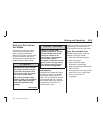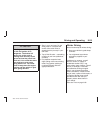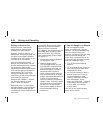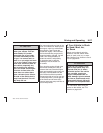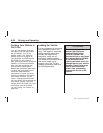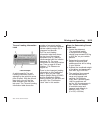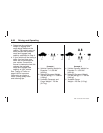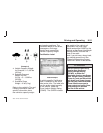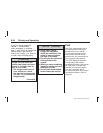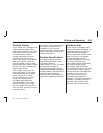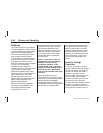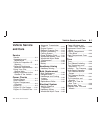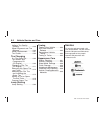
A. Vehicle Capacity Weight
for Example 3 = 1,000 lbs
(453 kg).
B. Subtract Occupant
Weight 200 lbs
(91 kg) × 5 = 1,000 lbs
(453 kg).
C. Available Cargo
Weight = 0 lbs (0 kg).
Refer to the vehicle’s Tire and
Loading Information label for
specific information about
the vehicle’s capacity weight
and seating positions. The
combined weight of the driver,
passengers, and cargo
should never exceed the
vehicle’s capacity weight.
Certification Label
A vehicle specific Certification
label, is attached to the driver
side center pillar. The label tells
you the gross weight capacity
of the vehicle, called the
Gross Vehicle Weight Rating
(GVWR). The GVWR includes
the weight of the vehicle, all
occupants, fuel, and cargo.
Never exceed the GVWR for the
vehicle, or the Gross Axle Weight
Rating (GAWR) for either the
front or rear axle.
And, if you do have a heavy load,
you should spread it out. See
“Steps for Determining Correct
Load Limit” earlier in this section.
{ CAUTION
Do not load the vehicle any
heavier than the Gross
Vehicle Weight Rating
(GVWR), or either the
maximum front or rear Gross
Axle Weight Rating (GAWR).
If you do, parts on the vehicle
can break, and it can change
the way your vehicle handles.
These could cause you to
lose control and crash. Also,
overloading can shorten
the life of the vehicle.
Example 3
Label Example
Driving and Operating 8-31
2008 - Pontiac G8 Owner Manual



